This document provides an overview of objects and protocols in CPython. Some key points: - Everything in Python is an object, with a common header including a reference count and pointer to its type. Types are defined by TypeObjects which store metadata like function pointers. - Protocols like Number, Sequence, Mapping are defined by slots on TypeObjects like tp_as_number and tp_as_sequence. These allow objects to support common operations even if they are different types, through duck typing. - Magic methods fill in protocol slots, so e.g. a class with a __len__ method will support the len() operation by filling tp_as_sequence->sq_length. This provides a


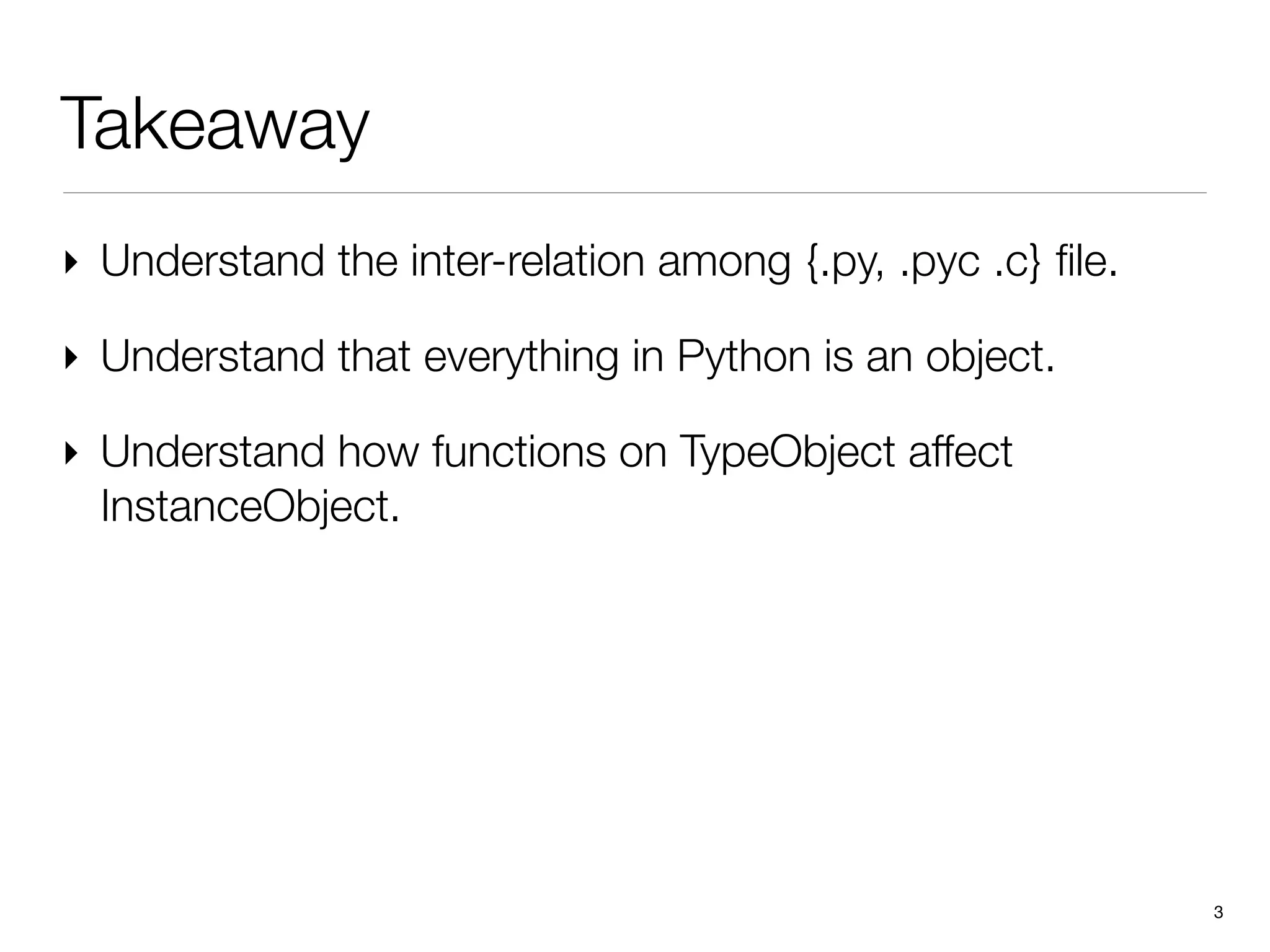
![CPython Overview ‣ First implemented in Dec.1989 by GvR, the BDFL ‣ Serving as the reference implementation. ‣ IronPython (clr) ‣ Jython (jvm) ‣ Brython (v8, spider) [no kidding] ‣ Written in ANSI C. ‣ flexible language binding ‣ embedding (libpython), e.g., openwrt, etc. 4](https://image.slidesharecdn.com/intro-python-object-protocol-150504154824-conversion-gate02/75/Intro-python-object-protocol-4-2048.jpg)

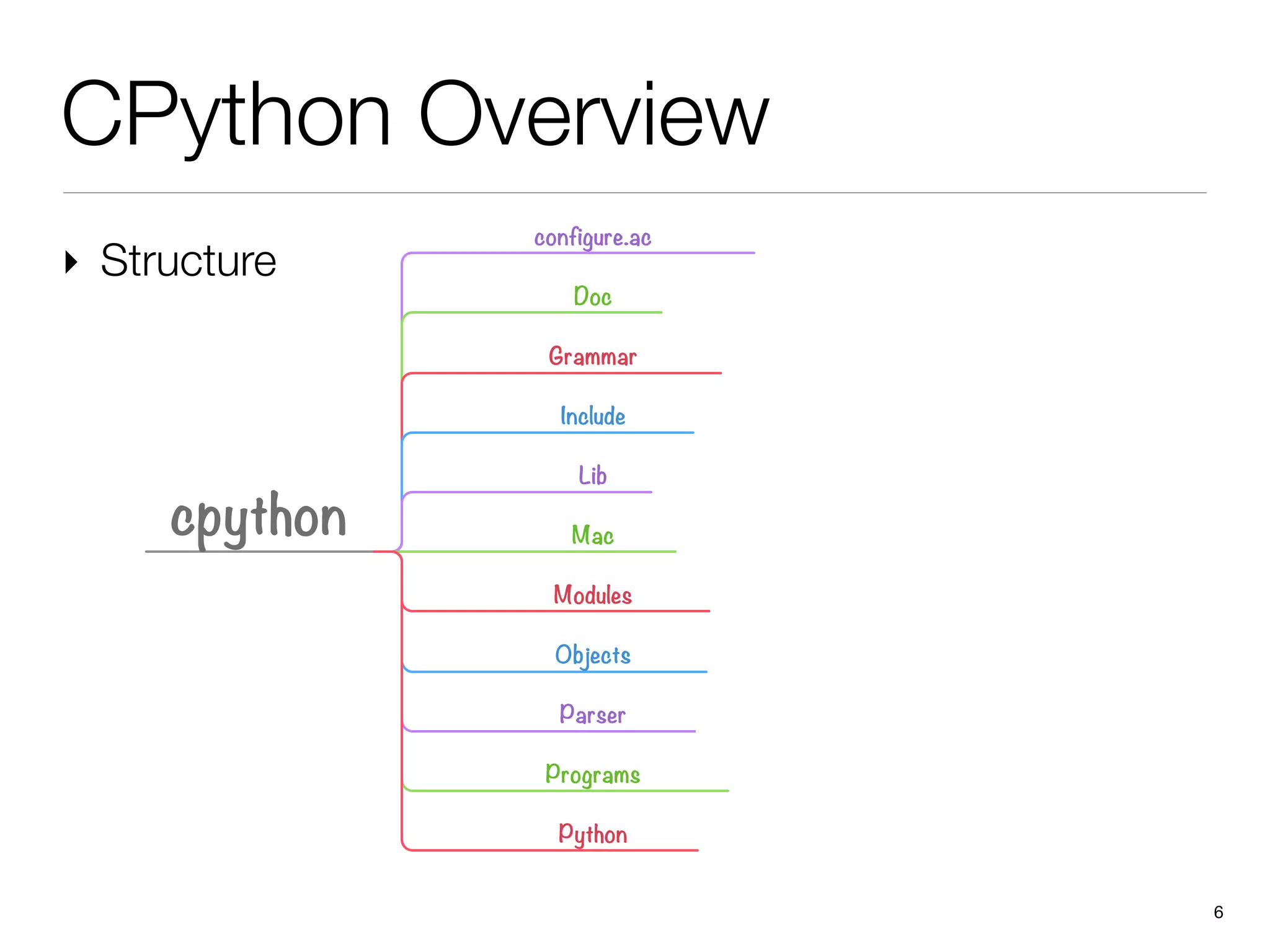
![CPython Overview ‣ execution lifetime 7 PY Parser PY[CO] VM LOAD 1 LOAD 2 ADD LOAD X STORE X x = 1 + 2 1 1 2 3 3 x STACK takeaway: py/pyc/c inter-relatoin](https://image.slidesharecdn.com/intro-python-object-protocol-150504154824-conversion-gate02/75/Intro-python-object-protocol-7-2048.jpg)
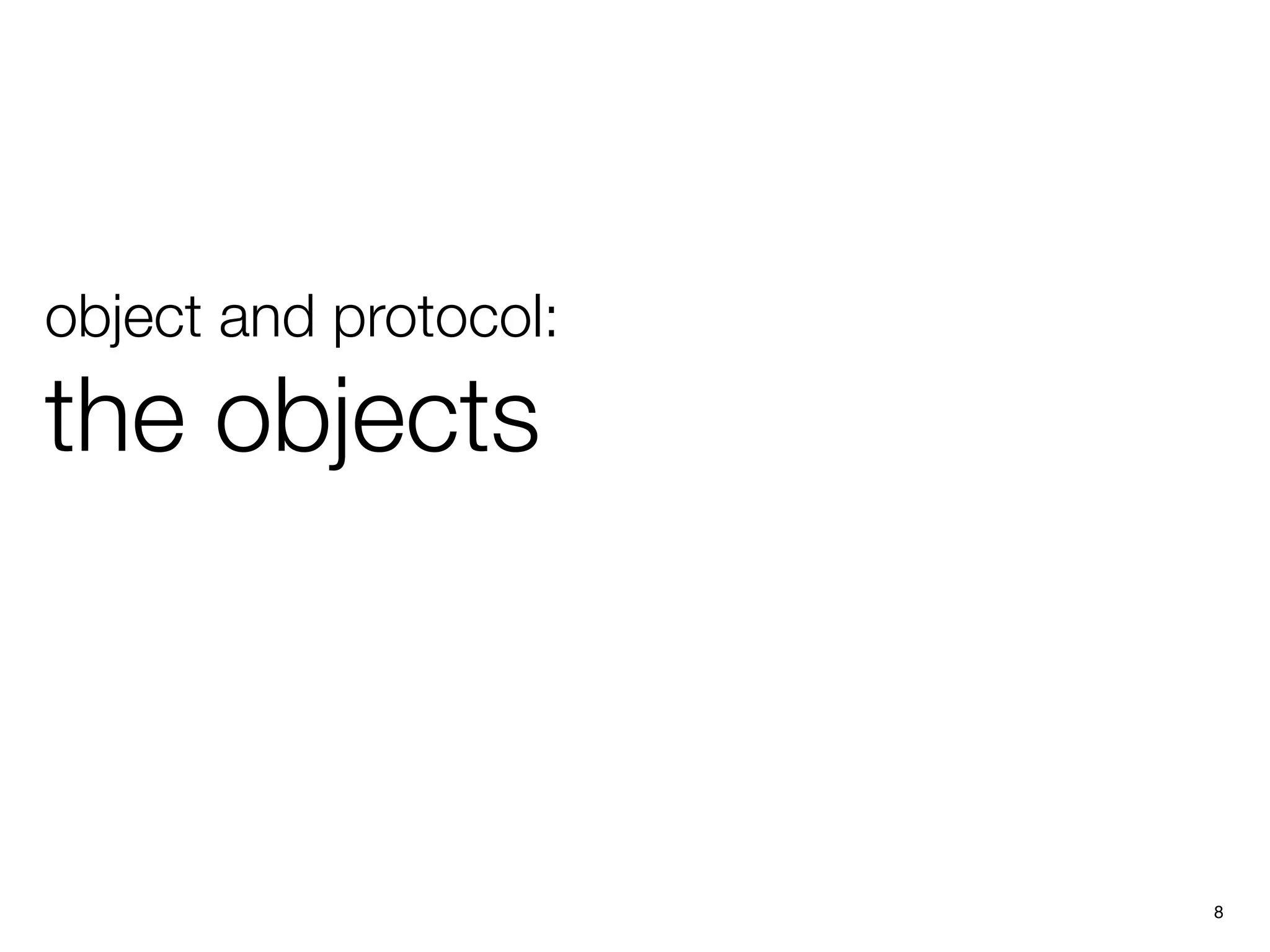

![Object Structure Will PyLongObject overflow? 10 The answer: chunk-chunk digit[n] … digit[3] digit[2] ob_type ob_size digit ob_digit[1] ob_refcnt PyLongObject typedef PY_UINT32_T digit; result = PyObject_MALLOC(offsetof(PyLongObject, ob_digit) + size*sizeof(digit)); n = 2 ** 64 # more bits than a word assert type(n) is int and n > 0](https://image.slidesharecdn.com/intro-python-object-protocol-150504154824-conversion-gate02/75/Intro-python-object-protocol-10-2048.jpg)
![Object Structure Why my multi-dimensional array won’t work? 11 The answer: indirection, mutability allocated ob_type ob_item ob_refcnt ob_size PyListObject PyObject* PyObject* … PyObject* PyObject* allocated ob_type ob_item ob_refcnt ob_size PyObject* PyObject* … 42 None m, n = 4, 2 arr = [ [ None ] * n ] * m arr[1][1] = 42 # [[None, 42], [None, 42], [None, 42], [None, 42]] PyList_SetItem](https://image.slidesharecdn.com/intro-python-object-protocol-150504154824-conversion-gate02/75/Intro-python-object-protocol-11-2048.jpg)
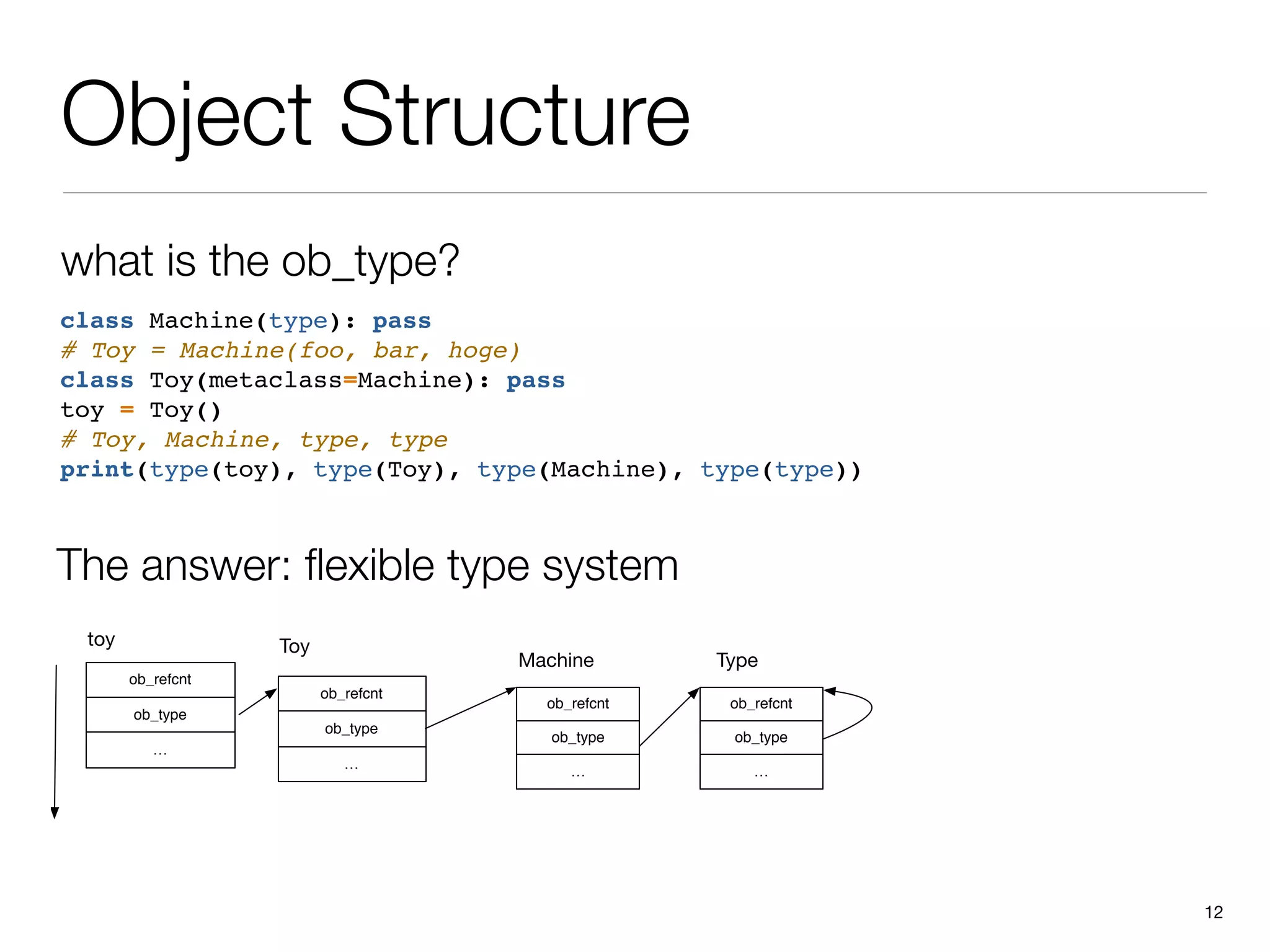
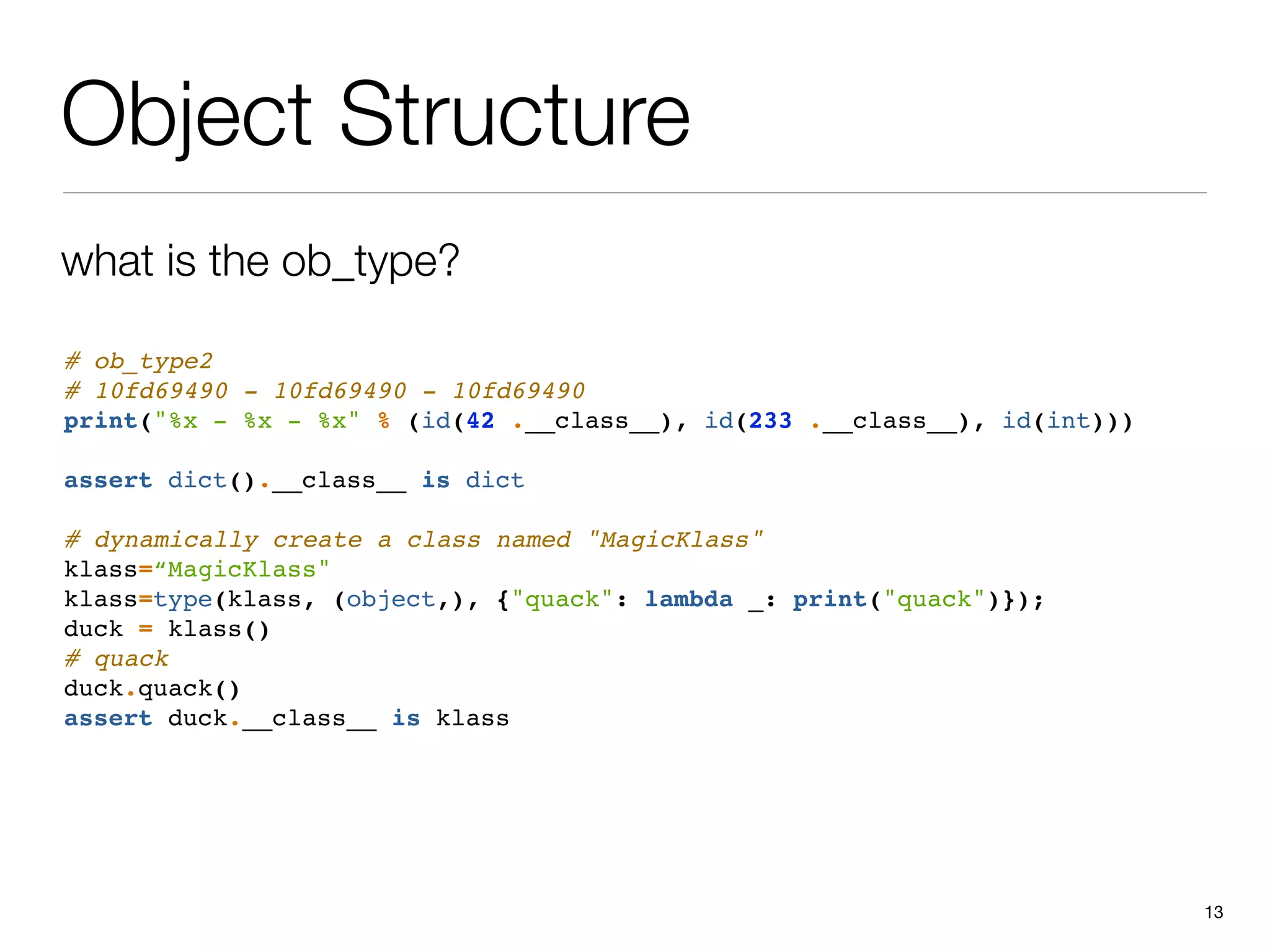





![More Example Why can we multiply a list? Is it slow? 19 arr = [None] * 3 # [None, None, None] Exercise: arr = [None] + [None] # [None, None]](https://image.slidesharecdn.com/intro-python-object-protocol-150504154824-conversion-gate02/75/Intro-python-object-protocol-19-2048.jpg)

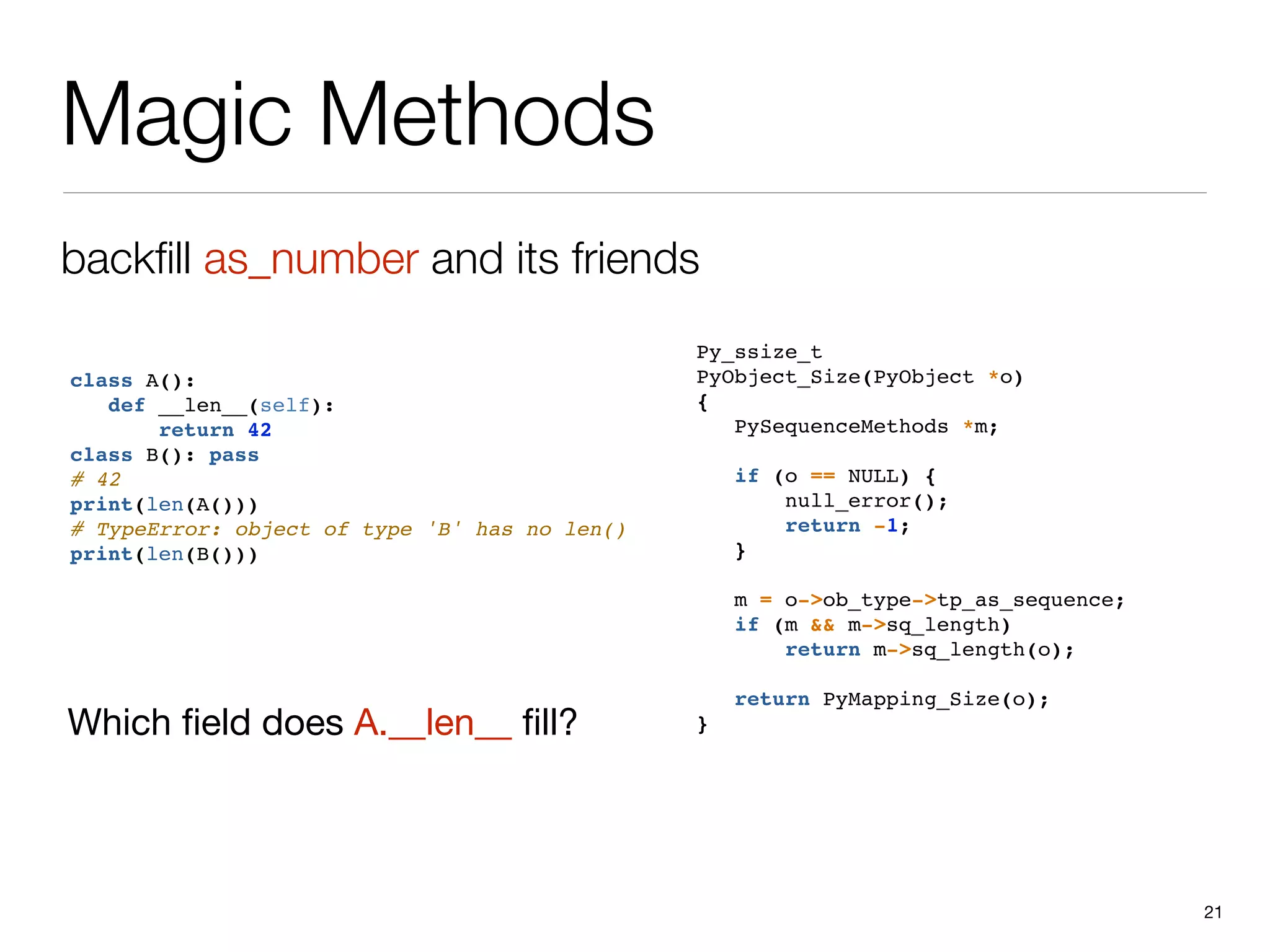
![Next: Heterogeneous Have you ever felt insecure towards negative indexing of PyListObject? 22 The answer: RTFSC words = "the quick brown fox jumps over the old lazy dog".split() assert words[-1] == "dog" words.insert(-100, "hayabusa") assert words[-100] == ??](https://image.slidesharecdn.com/intro-python-object-protocol-150504154824-conversion-gate02/75/Intro-python-object-protocol-22-2048.jpg)
